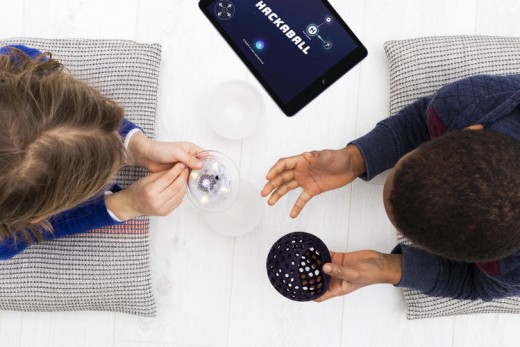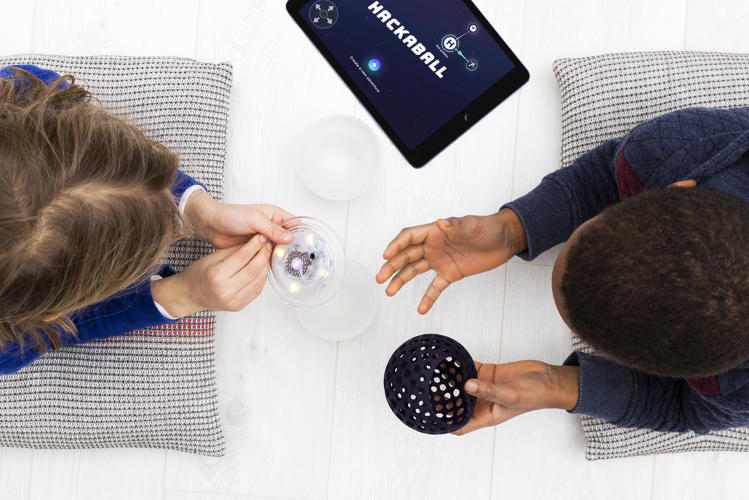This Throwable Computer Teaches Kids How To Code
Hackaball gives kids the power to program their own games, and takes coding outside.
Coding is a great skill for kids to learn but it can be a lonely, sedentary endeavor. Hackaball, a new toy created from a partnership between the design agencies MAP and Made By Many, promises to get kids off their butts and playing outside—all while teaching basic coding skills and empowering kids to invent their own kind of play.
It’s a lot to ask from one product which is why Hackaball had to be meticulously designed. The ball is bigger than a baseball but smaller than a soccer ball, and it comes with several simple parts that can be put together using basic instructions, so kids understand what’s inside, and get the chance to start creating from the get-go. Once it’s put together, the toy can glow different colors, make noises, and even vibrate. As for how to use it? The kids get to decide.
Using a space-themed app, kids write if-then rules, learning the syntax of basic coding. An example: if you drop a ball, then it turns red. Or if the ball hits something, then it will make a noise. These games can be as complicated or as simple as kids want.
One of the chief design challenges was making the ball extra-sturdy—after all, this is a computer that’s meant to be thrown. “We spent a lot of time looking at what size, what the weight should be, how it should bounce, what materials it should be,” says Jon Marshall, MAP’s design director. The ball’s outer silicone membrane acts as a shock absorber, protecting the more breakable internal parts.
The Hackaball evolved over the course of extensive testing, which was conducted with more than 100 groups of children and their parents across the U.K. “One thing we found is that for really young kids, the earlier version of the app we had was a little dry,” Marshall says. To fix that, they added a space-themed narrative that makes programming just as fun as the ball games themselves. The older kids, however, wanted to stretch the computer to do things outside of the ball itself, which they can do by taking apart the two halves and attaching the computer to a toy car, a Lego construction, or anything else you can program using simple inputs and outputs. The flexibility allows a wide age range of kids to enjoy Hackaball, though Marshall says the core demographic is 6- to 10-year-olds.

One of the key goals was to make kids feel like they can be creators. “It’s a sense of being in control and of creative and open-ended play that rewards creativity,” he says. “It empowers them to be part of this maker generation and movement.” The Hackaball is currently seeking funding on Kickstarter, where you can preorder the toy for $69.
Fast Company , Read Full Story
(113)














